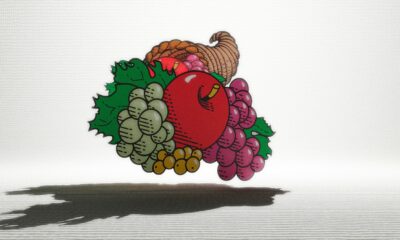Topic
Exploring Buší: Traditional Czech Folk Dances Unveiled

Welcome to the lively world of Buší, where traditional Czech folk dances come alive with vibrant energy and a sense of community. Step into a whirlwind of twirls, stomps, and laughter as we delve into the rich history, captivating costumes, and infectious music that make Buší an integral part of Czech culture.
Prepare to be transported back in time as we uncover the origins of Buší and explore its various forms. From rustic village celebrations to modern-day revivals, this dynamic dance tradition has evolved through the ages while still retaining its authentic charm.
Whether you’re a seasoned dancer or simply curious about different cultural expressions, join us on this enchanting journey as we unravel the secrets behind Buší’s enduring appeal. So grab your dancing shoes and let’s dive right in!
History and Origins of Buší
Buší, a lively and spirited Czech folk dance tradition, has deep roots in the history of the Czech people. Its origins can be traced back to the 18th century when it was primarily performed by peasants during harvest festivals and other important celebrations. This vibrant dance form soon became an integral part of Czech culture, embodying the spirit and joy of community gatherings.
The exact origin of Buší is somewhat shrouded in mystery. However, historians believe that its foundation lies in ancient pagan rituals that celebrated fertility and abundance. Over time, these rituals evolved into elaborate dances accompanied by traditional music played on instruments such as accordions, violins, and drums.
Buší not only served as a form of entertainment but also played a significant role in preserving regional customs and traditions. Each region developed its unique style of Buší with distinct steps, rhythms, and costumes reflecting their local identities.
As time went on, Buší began to transcend social boundaries. It was no longer confined to rural communities but spread to urban areas too. The popularity of this folk dance grew exponentially throughout the 19th century when nationalist movements sought to revive Czech national identity through cultural practices like Buší.
Despite periods where interest waned due to political upheavals or changing societal norms, efforts were made to preserve this cherished tradition for future generations. Today there are numerous folklore groups dedicated to keeping Buší alive through performances at festivals both within the Czech Republic as well as internationally.
The history and origins of Buší offer us invaluable insights into the rich tapestry of Czech heritage. By embracing this traditional dance form with open arms today’s generation can connect with their past while celebrating their shared cultural identity
Types of Buší Dances
Buší dances come in various forms, each with its own unique style and flair. These dances are deeply rooted in Czech tradition and have been passed down through generations. Let’s explore some of the most popular types of Buší dances:
1. Polka: The polka is a lively dance characterized by quick footwork and energetic movements. It is often performed in pairs or groups, with dancers spinning and twirling to the upbeat rhythm of traditional Czech music.
2. Mazurka: Originating from Poland, the mazurka has found its way into Czech culture as one of the beloved Buší dances. It features graceful movements and intricate patterns, showcasing the dancers’ skill and precision.
3. Sousedská: Also known as “The Neighbors Dance,” sousedská brings together couples who perform elegant waltz-like steps while circling around each other on the dance floor.
4. Starodávný tanec: Translating to “ancient dance,” this type of Buší dance focuses on recreating historical choreography that reflects traditional folk customs and rituals.
5. Beseda: Considered a communal dance, beseda involves large groups dancing in circle formations while holding hands or linking arms. This lively dance encourages participation from everyone present.
Each type of Buší dance offers a glimpse into Czech heritage and allows participants to connect with their cultural roots through movement and music.
Traditional Costumes and Music
Traditional Costumes and Music are an integral part of the Buší experience. The vibrant costumes worn by dancers add a splash of color to the festivities, while the music sets the rhythm for each dance.
The costumes in Buší dances vary depending on the region and style of the dance. Men often wear traditional shirts with embroidered patterns, paired with trousers or skirts made from colorful fabric. Women typically don long, flowing skirts adorned with intricate designs, along with blouses featuring delicate lacework.
Each costume is unique and reflects the cultural heritage of its respective region. The attention to detail in these garments is remarkable, showcasing artisanal craftsmanship that has been passed down through generations.
Accompanying these beautiful costumes is traditional Czech folk music. The lively melodies played on instruments such as violins, accordions, and clarinets create a joyful atmosphere that encourages everyone to join in on the dancing.
The rhythm of Buší music varies across different dances but always remains infectious and energizing. It’s impossible not to tap your feet or sway your hips when you hear it!
While traditional costumes and music may seem like aesthetic additions to Buší dances, they actually play a vital role in preserving Czech culture. These elements connect present-day communities with their ancestors’ traditions and serve as tangible reminders of their shared history.
Moreover, wearing these costumes and dancing to this music evokes a sense of pride and belonging among participants who feel deeply connected to their roots. It allows them to celebrate their heritage while fostering unity within their community.
In recent years, there has been a resurgence in interest towards traditional Czech folk culture, including Buší dances. This revival has led to adaptations where modern influences blend harmoniously with tradition.
Contemporary artists have found innovative ways to incorporate elements from various genres into Buší performances while still honoring its origins. This fusion breathes new life into old customs and ensures that future generations will continue embracing this cherished aspect of Czech culture.
The Importance of Buší in Czech Culture
Buší holds a special place in the heart of Czech culture, representing the country’s rich heritage and traditions. These traditional folk dances have been passed down through generations, preserving the essence of Czech identity.
One cannot underestimate the significance of Buší as a cultural symbol. It serves as a powerful connection to the past, reminding people of their roots and fostering a sense of belonging within the community. The lively rhythms and spirited movements bring people together, creating an atmosphere filled with joy and camaraderie.
Beyond its entertainment value, Buší plays an important role in celebrating milestones and events in Czech society. From weddings to festivals, these dances are often performed to honor special occasions. They serve as an expression of collective pride and unity.
Moreover, Buší is not just limited to performance; it also serves as a means for transmitting knowledge from one generation to another. Through teaching and learning these intricate dance steps, younger individuals gain insight into their cultural legacy while forging bonds with their elders.
In recent years, there has been a resurgence of interest in Buší both domestically and internationally. Efforts have been made to revive this art form by organizing workshops and festivals dedicated solely to promoting traditional Czech dances.
To truly experience the magic of Buší firsthand, consider attending one such event or joining a local dance group where you can learn from experienced dancers while immersing yourself in authentic Czech customs.
Buší continues to thrive because it carries forward cherished traditions that define what it means to be Czech. Its importance lies not only in its entertainment value but also in its ability to connect generations, foster unity among communities, promote cultural heritage preservation efforts worldwide.
Modern Revivals and Adaptations of Buší
Buší, with its rich history and cultural significance, has not been confined to the past. In fact, it has experienced a revival in recent years as people embrace their traditional roots and seek connection through dance.
In modern times, there have been various adaptations of Buší that blend tradition with contemporary influences. Dance troupes and enthusiasts have taken the basic steps and movements of Buší and added their own creative twists. This allows for a dynamic fusion of styles while still paying homage to the essence of the traditional dances.
One example is the incorporation of different music genres into Buší performances. While traditional folk music remains a staple, some groups experiment with incorporating elements from pop or rock music to create a more vibrant atmosphere that appeals to younger audiences.
Modern technology has played a role in promoting and preserving the art form. Social media platforms allow dancers from different parts of Czech Republic (and even around the world) to connect and share their passion for Buší. Online tutorials make it easier for newcomers to learn the steps and join in on the fun!
The popularity of folk festivals also contributes to keeping Buší alive in contemporary society. These events provide opportunities for both seasoned performers and beginners alike to showcase their skills, exchange ideas, and celebrate this cherished aspect of Czech culture together.
Though these adaptations may differ from traditional forms, they serve as an important bridge between generations – linking past traditions with present-day expressions. By embracing change while honoring heritage, these modern revivals ensure that Buší continues to evolve without losing its core identity.
Whether you witness a performance at one of these festivals or participate in classes offered by local community centers or dance studios specializing in Czech folklore – there are numerous ways for anyone interested in experiencing this captivating dance form firsthand!
How to Experience Buší for Yourself
If you’re intrigued by the vibrant and lively world of Czech folk dances, experiencing Buší firsthand is an absolute must. This traditional dance form encapsulates the rich cultural heritage of the Czech Republic and offers a unique opportunity to immerse yourself in its rhythmic beats and intricate footwork.
To experience Buší for yourself, start by seeking out local festivals or events that showcase traditional Czech dances. These gatherings often feature live music performances, colorful costumes, and enthusiastic dancers who are more than happy to teach newcomers the steps.
Once you find a Buší event near you, don’t be shy – join in! Even if you’re not familiar with the specific dance moves, embrace the spirit of camaraderie and let your feet follow along with the infectious rhythm. Donning a traditional costume can also enhance your experience and make you feel like a true part of this vibrant tradition.
If attending live events isn’t possible, there are online resources available where you can watch videos or even take virtual classes to learn Buší at your own pace. While it may not be quite as immersive as being surrounded by fellow dancers in person, it’s still an excellent way to connect with this captivating art form from anywhere in the world.
Additionally, consider visiting museums or cultural centers that offer exhibits on Czech folklore and traditions. Here, you can explore artifacts such as costumes, musical instruments used during Buší performances while gaining valuable insights into its historical significance.
Remember that experiencing Buší is about more than just learning the steps – it’s about embracing a piece of Czech culture that has been passed down through generations. So let go of any inhibitions and allow yourself to fully engage with this joyful dance style – feel free to stomp your feet emphatically (but mindfully!) along with others!
Conclusion
In this blog post, we have delved into the captivating world of Buší, traditional Czech folk dances that have been cherished for generations. We explored the history and origins of Buší, discovering its deep roots in Czech culture. From festive celebrations to community gatherings, these dances have played a significant role in bringing people together.
We also discussed the various types of Buší dances, each with its own unique style and symbolism. The energetic footwork and lively movements create an enchanting spectacle that never fails to captivate both participants and onlookers alike.
Topic
Evil Eye Bracelet: A Cultural Icon of Protection and Style

In the realm of ancient beliefs and contemporary fashion, few symbols carry as much weight and intrigue as the Evil Eye. From its origins steeped in ancient civilizations to its modern-day manifestation as a trendy accessory, the Evil Eye continues to captivate minds and adorn wrists worldwide. In this exploration, we delve into the rich history, cultural significance, and modern interpretations of the Evil Eye bracelet, uncovering its enduring allure.
Origins and Cultural Significance
The concept of the Evil Eye spans across numerous cultures and civilizations, dating back thousands of years. Its roots can be traced to ancient Mesopotamia, Greece, Rome, and beyond, where it was believed that certain individuals possessed the power to cast curses or malevolent glances capable of bringing harm or misfortune to others. To ward off this evil gaze, people turned to various talismans and charms, among which the Evil Eye emerged as one of the most prominent symbols of protection.
In many cultures, the Evil Eye is depicted as a blue eye, symbolizing vigilance, wisdom, and protection against malevolent forces. The color blue, often associated with the sky and the divine, is believed to possess mystical properties capable of deflecting negative energy.
Evolution into Fashion
Over time, the symbolic significance of the Evil Eye expanded beyond its protective function to become a popular motif in jewelry and fashion. Today, the Evil Eye bracelet is not merely a spiritual safeguard but also a stylish accessory embraced by people of diverse backgrounds.
One reason for its widespread appeal is its versatility. Whether crafted from traditional materials like gold and silver or adorned with colorful beads and gemstones, Evil Eye bracelets come in various designs to suit different tastes and occasions. From delicate chains to intricate woven patterns, each piece carries its own unique charm, making it a staple in both casual and formal attire.
Global Influence and Interpretations
While the Evil Eye holds universal significance as a symbol of protection, its interpretation varies across cultures. In the Mediterranean region, where belief in the Evil Eye remains deeply ingrained, wearing an Evil Eye bracelet is seen as a proactive measure to deflect envy and negativity. Similarly, in Middle Eastern and South Asian cultures, the Evil Eye is revered as a potent amulet against the malevolent influence of jealousy and ill will.
In addition to its protective properties, the Evil Eye bracelet has also been embraced by Western fashion enthusiasts drawn to its aesthetic appeal. In this context, it is often viewed more as a trendy accessory than a spiritual talisman, yet its symbolic resonance endures, adding depth and meaning to personal style.
Modern Interpretations and Customization
As the popularity of the Evil Eye bracelet continues to soar, designers are incorporating innovative twists to refresh its timeless appeal. Contemporary interpretations may feature modern materials, avant-garde designs, or playful embellishments, catering to diverse preferences and fashion sensibilities.
Moreover, the advent of customizable jewelry has allowed individuals to infuse their Evil Eye bracelets with personal significance. Whether inscribed with initials, birthstones, or other symbols, these personalized pieces serve as talismans of individual identity and protection, forging a deeper connection between wearer and accessory.
Beyond Fashion: Rituals and Beliefs
Despite its fashionable facade, the Evil Eye bracelet remains rooted in ancient beliefs and rituals that transcend mere ornamentation. In some cultures, the act of wearing or gifting an Evil Eye bracelet is accompanied by rituals meant to activate its protective powers, such as reciting prayers or performing blessings.
Moreover, the symbolism of the Evil Eye extends beyond personal protection to encompass communal well-being. In societies where belief in the Evil Eye is prevalent, rituals aimed at averting its influence are woven into daily life, serving as a reminder of the interconnectedness between individuals and their surroundings.
Conclusion
In the tapestry of human history and culture, the Evil Eye bracelet stands as a testament to humanity’s enduring quest for protection and self-expression. From its ancient origins to its modern incarnation as a fashion statement, it continues to bridge the gap between tradition and innovation, spirituality and style.
As we adorn ourselves with the emblematic gaze of the Evil Eye, we not only invoke its protective powers but also pay homage to the collective wisdom of our ancestors. In a world where uncertainty looms large, the Evil Eye bracelet serves as a tangible reminder of our resilience in the face of adversity, infusing our lives with both beauty and meaning.
Topic
luv.trise: A Platform for Meaningful Connections

In today’s fast-paced world, finding meaningful connections can sometimes feel like an insurmountable task. Traditional dating apps often focus on quantity over quality, leaving users frustrated with superficial matches and empty interactions. However, there is a beacon of hope for those seeking genuine relationships: luv.trise. This revolutionary dating app is designed to help individuals find meaningful connections with ease, combining cutting-edge technology with user-friendly features to streamline the dating process.
What is luv.trise?
luv.trise stands out from the crowd as an innovative dating platform that prioritizes meaningful connections over fleeting encounters. Unlike other apps that rely solely on swipes and superficial judgments, luv.trise utilizes advanced algorithms to match users based on their preferences, interests, and compatibility factors. Whether you’re looking for love, friendship, or companionship, luv.trise offers a platform where you can explore and engage with like-minded individuals effortlessly.
How Does it Work?
Getting started with luv.trise is simple. Users can download the app from the App Store or Google Play Store and create a profile. The profile creation process is straightforward, requiring users to provide information about themselves, including their interests, hobbies, and what they’re looking for in a partner. Once the profile is complete, luv.trise’s powerful matching algorithm goes to work, suggesting compatible matches based on the user’s criteria.
Key Features of luv.trise
Profile Creation
Creating a profile on luv.trise is quick and easy. Users can upload photos, write a bio, and share details about their interests and preferences. This information helps the app’s algorithm tailor match suggestions to each user’s specific criteria.
Matching Algorithm
luv.trise’s matching algorithm analyzes users’ profiles, preferences, and behavior to suggest compatible matches. It takes into account factors such as location, age, interests, and relationship goals to ensure that users are connected with individuals who are well-suited to them.
Messaging and Communication
Once a match is made, users can engage in conversation through luv.trise’s messaging feature. This allows them to get to know each other better before deciding to meet in person. The app also offers additional communication tools such as voice and video calling to facilitate meaningful connections.
Safety and Privacy
Safety and privacy are top priorities for luv.trise. The app employs stringent security measures to protect users’ personal information and ensure a safe dating environment. Features such as photo verification and report buttons help to maintain the integrity of the platform and safeguard users from unwanted interactions.
Benefits of Using luv.trise
Finding Compatible Matches
One of the primary benefits of using luv.trise is the ability to find compatible matches quickly and easily. The app’s sophisticated matching algorithm takes the guesswork out of dating by connecting users with individuals who share their interests and values.
Convenient Interface
luv.trise boasts a sleek and intuitive interface that makes navigating the app a breeze. Whether you’re browsing profiles, sending messages, or adjusting your settings, everything is designed to be user-friendly and accessible.
Enhanced Security
With luv.trise, users can feel confident knowing that their personal information is protected. The app employs industry-leading security measures to ensure that data is kept safe and secure at all times.
Personalized Experience
luv.trise offers a personalized experience tailored to each user’s preferences and desires. From customized match suggestions to personalized messaging, the app is designed to help users find meaningful connections that resonate with them on a deeper level.
Success Stories
Thousands of users have found love and companionship through luv.trise. From casual dates to long-term relationships, the app has helped people from all walks of life connect with others who share their interests and values.
Conclusion
luv.trise is more than just a dating app—it’s a platform for meaningful connections. With its innovative features, personalized approach, and commitment to safety, luv.trise is changing the way people meet and interact online. Whether you’re looking for romance, friendship, or something in between, luv.trise offers a space where you can explore and engage with like-minded individuals in a safe and welcoming environment.
Topic
Twisted Tea: Unraveling the Charm of a Popular Malt Beverage

In the ever-evolving landscape of alcoholic beverages, one particular concoction has been making waves and capturing the taste buds of a diverse consumer base – Twisted Tea. This malt-based drink has grown in popularity over the years, enticing consumers with its unique blend of sweetness and spirited essence. In this article, we’ll take a closer look at the origins, ingredients, brewing process, and the cultural impact of Twisted Tea, exploring what makes it a beloved choice among beverage enthusiasts.
The Genesis of Twisted Tea
Twisted Tea traces its roots back to the early 2000s when the idea of combining tea and alcohol led to the creation of a refreshing and innovative beverage. The minds behind this delightful concoction sought to provide consumers with an alternative to traditional beer, offering a more palatable option that bridged the gap between beer and sweet tea.
Ingredients
At the heart of Twisted Tea’s appeal lies its carefully selected ingredients. The basic components include malt, tea, water, sugar, and a hint of natural flavors. The malt provides the alcoholic content, while the tea infuses the beverage with a distinct flavor profile. The addition of sugar contributes to the sweetness, creating a well-balanced and smooth drinking experience. The natural flavors are the secret sauce that gives Twisted Tea its unique twist, making each sip a journey of delightful surprises.
Brewing Process
Crafting the perfect Twisted Tea involves a meticulous brewing process that ensures the harmonious integration of its various components. The journey begins with the brewing of malt, a crucial step that lays the foundation for the drink’s alcoholic content. Once the malt has undergone the fermentation process, it is combined with carefully brewed tea, creating the distinctive fusion that defines Twisted Tea.
The addition of water helps achieve the desired alcohol content and balance, ensuring that the beverage is neither too strong nor too weak. The infusion of sugar brings sweetness to the mix, providing a counterpoint to the bold flavors of malt and tea. Finally, the incorporation of natural flavors elevates Twisted Tea to a level of sophistication, turning it into a multifaceted sensory experience.
Flavor Varieties
Twisted Tea offers a variety of flavors to cater to diverse palates, further expanding its appeal. Classic Original, Half & Half (a blend of tea and lemonade), Raspberry, and Peach are just a few examples of the tantalizing options available. Each flavor variant adds a unique dimension to the drinking experience, allowing consumers to explore different facets of Twisted Tea’s flavor spectrum.
Cultural Impact
Beyond its delectable taste, Twisted Tea has made a significant impact on drinking culture. Its emergence marked a shift in consumer preferences, with an increasing demand for beverages that break away from traditional norms. The convenience of having a ready-to-drink malt beverage with the refreshing qualities of tea has resonated with a wide audience, making Twisted Tea a staple at social gatherings, parties, and outdoor events.
The brand’s marketing and packaging also contribute to its cultural appeal. The iconic black cans with vibrant colors and bold typography are instantly recognizable, creating a visual identity that reflects the bold and lively nature of the beverage.
Pairing Possibilities
One of the joys of Twisted Tea lies in its versatility when it comes to food pairings. Its sweet and slightly tangy profile makes it an excellent companion for a variety of dishes. Whether it’s a backyard barbecue, a picnic, or a casual dinner, Twisted Tea can complement the flavors of grilled meats, spicy dishes, and even desserts. The ability to pair well with different cuisines adds to its charm, making it a go-to choice for those who appreciate a beverage that can adapt to various culinary scenarios.
Social Media Presence
The success of Twisted Te’a is not only attributed to its taste but also to its robust presence on social media platforms. Memes, user-generated content, and hashtags related to Twisted Tea have become viral sensations, further fueling its popularity. The brand’s engagement with its audience on platforms like Instagram, Twitter, and Facebook has created a sense of community among Twisted Tea enthusiasts, fostering a dedicated fan base.
Conclusion
Twisted Te’a has undoubtedly earned its place in the pantheon of popular malt beverages, thanks to its innovative combination of tea, malt, and natural flavors. The journey from its inception to its current status as a cultural phenomenon reflects the evolving preferences of consumers and the beverage industry’s commitment to delivering novel and enjoyable experiences.
As we raise our cans of Twisted Te’a to celebrate its success, let’s savor the sweetness, embrace the spirit, and toast to the continued enjoyment of this delightful and twisted creation. Cheers to the tea that’s not afraid to be a little twisted!

 Topic4 months ago
Topic4 months agoEmbracing the Paradox of Retroya: Where Past and Future Collide

 Nail Salons4 months ago
Nail Salons4 months agoNail Salons in Meriden, CT

 Nail Salons4 months ago
Nail Salons4 months agoNail Salons in Ridgewood, NJ

 Technology3 months ago
Technology3 months agoCUBVH: Elevating Possibilities and Inspiring Innovations

 Business2 months ago
Business2 months agoSkyWestOnline: Empowering Employees with Essential Resources

 Manicure Guides4 months ago
Manicure Guides4 months agoHow to Cut Nails? – A Lady’s Guide

 Topic3 months ago
Topic3 months agoFruit of the Loom: Cornucopia Logo Fact Check

 Nail Salons4 months ago
Nail Salons4 months agoNail Salons in Norwalk, CT













